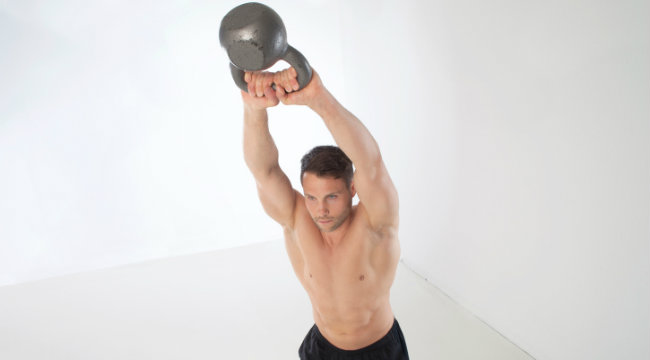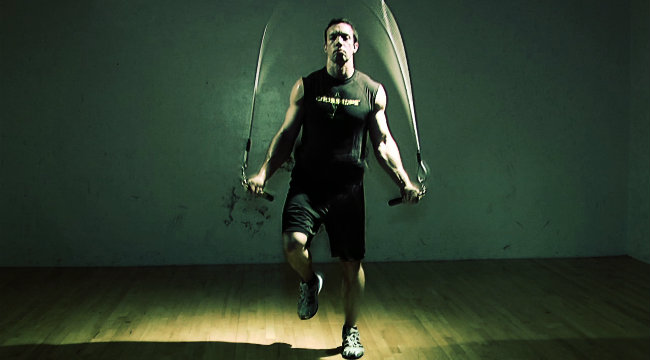28-Days-to-Lean Meal Plan
With the right plan and the right discipline, you can get seriously shredded in just 28 days.
Read article
In today’s world, it’s all about efficiency. We want to get as much quality work done in as short amount of time as possible. It couldn’t be truer when in comes to exercise. In a perfect world, all of us would workout twice a day, doing our cardio in the morning and weight training at night. But most of our schedules will not permit this type of training schedule so we need to get a little more creative when it comes to our training to get the most bang for our buck.
As physique-minded athletes, our primary goals are to build muscle while minimizing bodyfat. While weight training alone can produce results in both of these categories, adding in some cardio will help round out our training while improving conditioning, fat loss and overall fitness. So instead of ditching cardio because you are pressed for time, be efficient with your weight training workout and work cardio in between your sets.
If you only have 45-60 minutes to workout, you need to take full advantage of that fat-burning and muscle-building window. Traditionally, we will perform a set of, say, dumbbell chest presses for 10 reps, and then rest anywhere from 30 seconds to three minutes depending on the goal and intensity of the set. If you end up performing 12 total sets on chest day and rest an average of two minutes between sets that is 24 minutes of dead time that is filled with you sitting on your can
Many trainers will include what they call “fillers” in between sets in order to maximize training time and efficiency. This filler time that you have in between exercises is perfect to include some fat-burning cardio moves. You will keep your heart rate and metabolism up without hindering your weight training goals to build muscle. In fact, due to the change in training, this type of workout could help you bust through a current plateau due to the change in metabolic disturbance that it places on the body. If you are training primarily for strength, then stricter rest is probably warranted – you don’t want to compromise max power output on your next set – but for the vast majority out there concerned with muscle size and quality, then this is a great approach.
Exercise selection is key when performing cardio in between sets. You want to pick an exercise that won’t hinder your current weight training workout, and that will also provide a huge metabolic stimulus. Below are six strong choices.

Kettlebell swings can be done in between any type of weight training exercises, even on lower body days. They are a great fat-burning tool while stimulating the posterior chain, which we all need to train more often.
Perform 15-25 reps in between each set, striving for 250-500 swings per workout.

This is another exercise that can be done in between both upper and lower body exercises. Jumping rope works the lower leg but leaves the quads and hamstring still fresh. It also improves athleticism and overall conditioning.
If you are performing single-unders (one revolution of the rope), perform 50-100 reps depending on your current conditioning level. If you perform double unders (two revolutions of the rope) perform 10-20.

This piece of equipment, which lets you use your upper and lower body simultaneously, is the best-kept secret in conditioning. Many strength coaches use this as their go-to tool for clients but many bodybuilders and physique athletes overlook it. It is perhaps best used in conjunction with upper body work because if you sprint hard enough your quads will be screaming (as well as your lungs) which isn’t great for your next set of heavy squats.
Perform 20-second sprints in between sets. Work up to no more than 12 solid sprints per workout.

This is another piece of equipment that has emerged as one of the best conditioning tools around. Rowing is fast and efficient at burning calories. You use the entire body, making it perfect for people with limited time.
Perform a 200-meter sprint (takes anywhere from 30-60 seconds) between exercises. Perform no more than 8-10 sprints or else your weight training may tend to diminish in quality due to the high demands of the rower.

The best thing about the burpee is that you don’t need any equipment. Simply drop down to the floor in front of you and go. They are also easy on the muscles and more taxing on the cardio so it won’t hinder your weight training too much.
Perform 5-10 reps in between each set, striving for 75-150 total burpees in a single workout.
We are going old school on this one. Another one of my favorites because it requires no equipment, jumping jacks hit the cardio without compromising strength too much and you can get a high amount of volume in a short amount of time.
Perform as many jumping jacks as you can in 30 seconds in between each weight training exercise.

If building pure strength is your primary goal, I would limit the use of cardio between sets. In order to increase your strength you need to give yourself the proper amount of time in order for your central nervous system to recover.
If building muscle is your primary goal, perform these cardio moves in between sets on a less intense lifting day. For example, if you are lifting heavy on leg or back day, don’t do too many “covert” cardio sets, if any. Maybe include them for a few sets at the end of a workout. On an arm day or shoulder day, include more sets of cardio.
If fat loss is your goal, include them in all of your workouts. Just be mindful of which cardio move(s) you use. For example, it may not be wise use burpees if your workout is targeting your chest since you will be performing a modified push-up with each burpee. Also stay away from the Airdyne bike on a heavy leg day. Instead, do some jumping jacks.
For all of these scenarios, allow yourself 20-30 seconds of rest after you perform the cardio exercise before performing the next set of weight training.